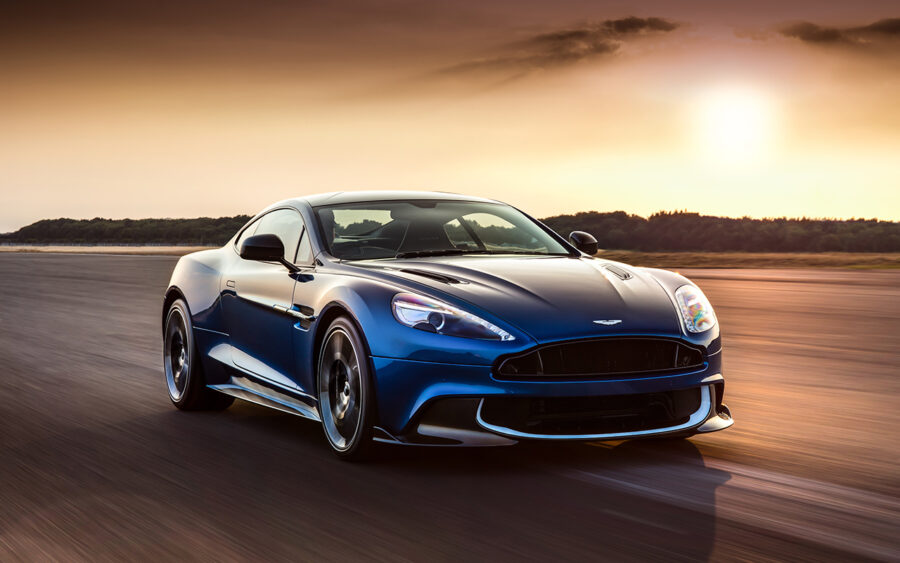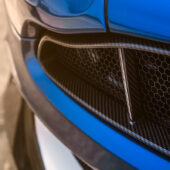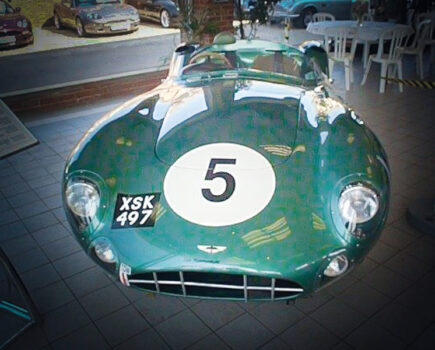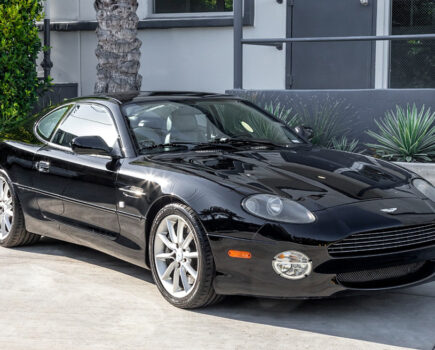Aston Martin’s DBS replacement revived the Vanquish name for the company’s range-topping super-GT. Today it makes for a very tempting used buy
Words: Kyle Fortune Images: Aston Martin
Say Aston Martin Vanquish and most people think of the car that brought the firm into the modern era at the dawn of the new millennium, perhaps because it was a certain British spy’s chosen transport. Like the DB9-based DBS before it, the second-generation Vanquish uses a version of Aston Martin’s VH (Vertical Horizontal) architecture, now in its third generation, which uses bonded and riveted aluminium in its structure as well as some carbon fibre elements. The new Vanquish largely shared its proportions with the Aston Martin DB9; it rides on much the same underpinnings, albeit completely revised to suit the Vanquish’s harder-edged role as a super GT.
In period, the Vanquish was tasked with taking on the Ferrari F12, a car which outgunned the Brit significantly on power; the Vanquish was significantly cheaper than its key Italian alternative and has remained so as the Prancing Horse’s value has skyrocketed. The Vanquish carved its own niche of being a more focused, more engaging car to drive than the DB9, with its weight stripped down considerably thanks to a carbon fibre body.
The revised Vanquish is arguably one of the finest-looking cars that Aston Martin has ever produced, its body sharing familial cues with the rest of the Aston Martin model range but adding some taut muscularity and neat detailing; the rear spoiler and those One-77-aping lights around the back are a particularly distinctive feature. So too are the prominent feature lines extending from the signature vent behind the front wheel, the Vanquish’s contrasting black bodywork on its lower portions not just serving to visually lengthen and lower, but also revealing its carbon fibre construction.
Underneath the long bonnet is a version of Aston Martin’s 5.9-litre V12 producing 573hp at 6,750rpm and peak torque of 620Nm at 5,500rpm. The V12 was mounted to a six-speed ZF automatic dubbed Touchtronic II by Aston Martin. The 0–62mph sprint is sorted in 4.1 seconds and top speed is 183mph. Aston Martin wouldn’t take too long to improve the Vanquish, with 2014 seeing the range-topping model adopt the Touchtronic III transmission, which brought two additional ratios for a count of eight.
Those additional ratios arrived along with a slightly higher output version of the same V12 – an increase of just 3hp for 576hp (torque growing to 630Nm) liberated via reductions in back pressure and some ECU revisions. Maximum speed was increased to 201mph and the 62mph sprint reduced to just 3.6 seconds: genuine supercar performance in a car that still had GT in its genes. That improved 0-62mph time was helped with the adoption of a launch control system for the first time on an Aston Martin.
Those changes were transformative: the post-2014 Vanquish was a sharper, more engaging driver’s car, with better-judged ratios for the engine’s performance, yet retaining the bandwidth to cover grand-touring or even daily driving angles. That breadth of ability now works massively in the Vanquish’s favour.
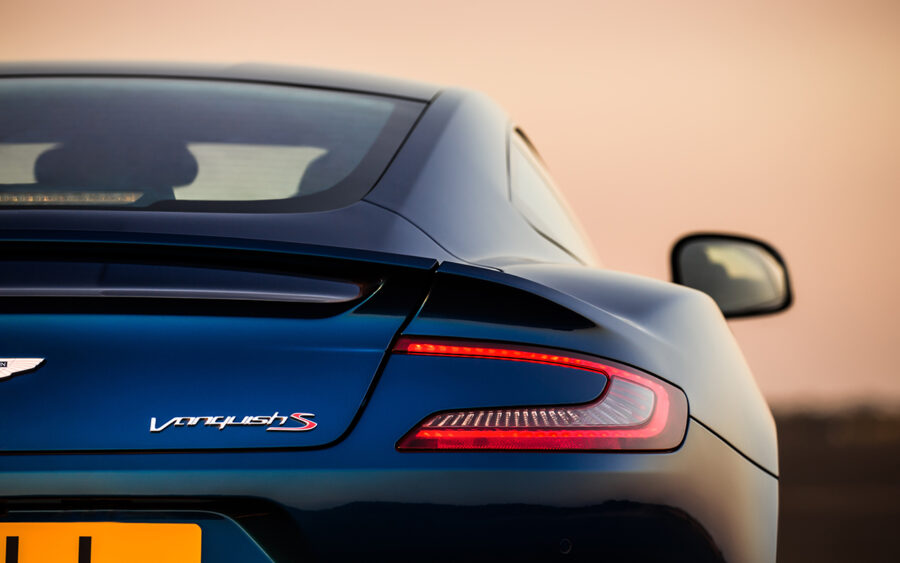
For those after an open-topped Vanquish, Aston Martin obliged in 2013 with the Vanquish Volante. The adoption of the folding roof did dent the performance slightly, but even with the earlier V12 and six-speed transmission a 4.3 second 0-62mph time and 183mph maximum (latterly 3.8 seconds and 197mph) were achieved.
Aston Martin upped the potential performance again with the Vanquish S offered from 2017 through to 2018. It gained a new version of the V12 engine with the same 5.9-litre capacity, although power increased to 603hp. Aston’s engineers went through the drivetrain and chassis to further enhance the agility and performance, the transmission gaining a zero backlash coupling to improve the shift response and speed while also increasing the driveability at lower speeds, the exhaust tuned to provide more appealing harmonics.
Dynamically, the chassis gained new geometry with revised spring and damper rates, these stiffer by 10%. The dampers gained new valving and the software controlling them was recalibrated, the result being improved turn-in response with less understeer, and a wider range of ability, depending on which of the damper modes you’ve selected. The Vanquish S also gained aerodynamic revisions that would improve stability.
Italian design house collaborator Zagato built its own limited-edition models spun off the Vanquish underpinnings. Not doing things by halves, Zagato would offer its take on the Vanquish in four different bodystyles: Coupe, Shooting Brake, Convertible and Speedster, built in a series of 99 cars for each with the exception of the Speedster, which was only offered to 28 customers. Naturally, these were significantly more expensive than the regular Vanquish; their rarity means you’ll only ever likely see one if you’re lucky enough to be perusing someone’s car collection.
The Vanquish ran until Aston Martin replaced it in 2018 with the DBS Superleggera. The Vanquish remains a high point for Aston Martin; it was the brand’s first 200mph production car, the first fully carbon-bodied model, and the last two-door Aston Martin to feature a naturally-aspirated V12. A significant and brilliant car, then, which can now be picked up at a fraction of its original £200,000 cost.
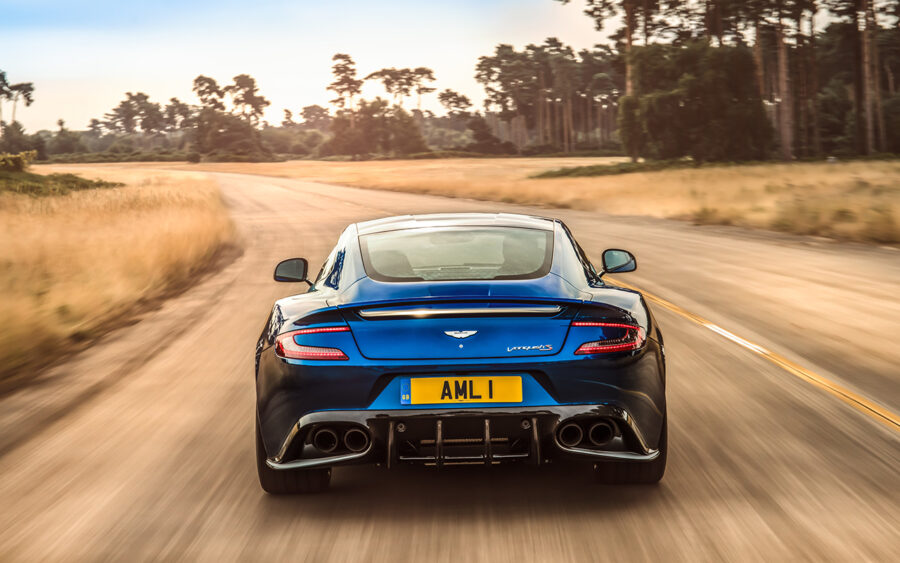
Bodywork
With a body entirely constructed from carbon fibre, you’ll have a hard time spotting any corrosion. This doesn’t exclude it from having any paint issues, however: any scratches, chips or high wear areas – around door handles and suchlike – should be checked for potential issues. Also look for any paint bubbling, which will point to water getting under the paint.
The head- and taillights on all Aston Martin models can suffer from condensation. There is a relatively simple fix that a competent DIY mechanic can do to alleviate this – taking the lights out, drilling a small hole and letting them dry before filling the hole and re-installing – although most specialists can do this for you if you’ve neither the time nor inclination.
That carbon body won’t be cheap to repair if there have been any knocks, so have any prospective purchase thoroughly checked if there’s history of repairs or panel replacement. The lower exposed carbon parts are perfectly situated to be scraped by kerbs, so get down low and feel the edges for any damage. That’s true underneath too: have a good poke around, and if possible remove the flat underfloor panels to check for any corrosion around the platform and the body mounts, where differing metals react and can rot as a result.
The doors should open out and up as with all modern Aston Martins, so check they do so and stay open; the pistons to hold them in place can sometimes needing replacing. The same is true of the bonnet and bootlid mounts, so check these. If you’re buying a Volante, be sure to check the hood mechanism works – repeatedly. If the seller has an issue with you doing so there’s quite likely to be a problem – and it could be costly to fix.
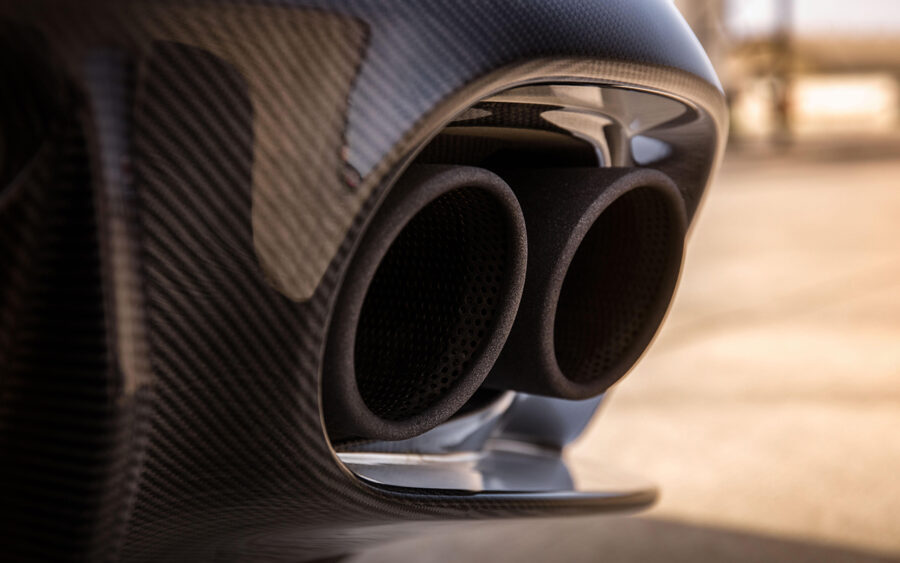
Engine and transmission
The 5.9-litre V12 in the Vanquish is a known quantity and generally reliable, but there are some things to keep an eye out for. Key here, says John McGurk of McGurk Performance Cars, is that “it’s crucial that you keep on top of your servicing,” – it’s a false economy to skip a year because the car’s not been used much. Annual servicing in crucial and a good specialist will be able to keep an eye out for any known and age-related issues. “Oil doesn’t last forever, nor does fuel,” explains McGurk, who recommends changing the oil as often as possible; not just in the engine, but in the transmission too. McGurk suggests halfing Aston’s requirement of four-year transmission fluid changes to two as a precaution.
Stale fuel from cars sitting idle for a while can cause havoc with fuel pumps, leading to their failure, while newer regular E10 fuel exacerbates this with old fuel gumming up the engine internals and causing corrosion in the lines. It’s always worth filling up with super or premium fuels with a lower ethanol content – currently E5 – and try not to park up your car for a long time with a full tank. Get fresh fuel as often as possible, as stale fuel can also be responsible for all manner of engine warning lights being thrown up.
Cars are meant to be driven and enjoyed, and the consequences of stale fuel, drying seals and more mean really you should get any Aston out and run it regularly, getting heat through the oil and into the remotest reaches of the engine. As a minimum, air filters should be replaced every two years – and check for any oil in their housings, because the V12’s PCV valves sometimes begin to fail and oil can make its way into the induction system.
The transmission should be free of knocks or grinding; these point to a worn differential or issues with the propshaft being out of balance. On a test drive, be sure to turn the car on full lock to check the differential. Any knocking from the engine needs investigating, as this could be the big-end bearings, while any misfiring is likely to be related to the coils and plugs.
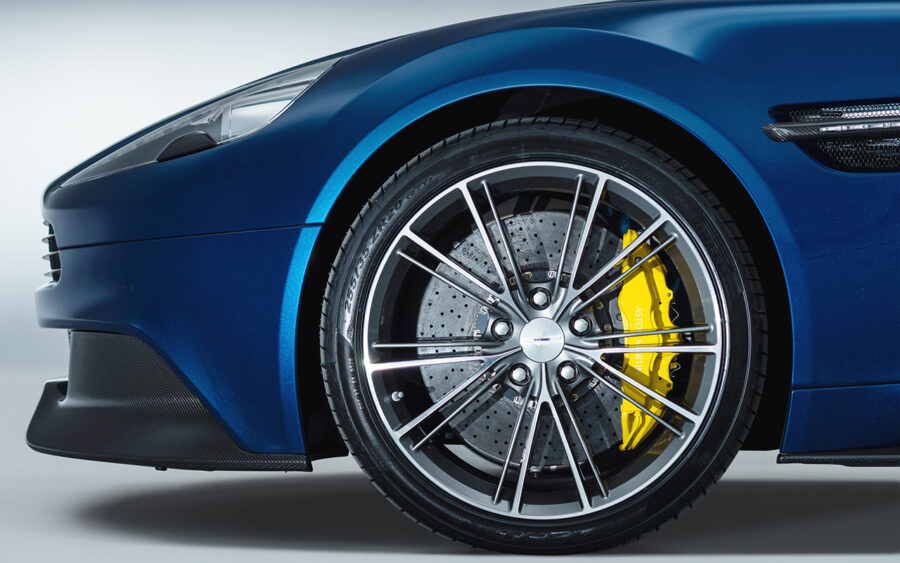
Suspension, steering and brakes
Riding on a double wishbones with coil springs and adaptive dampers, the Vanquish should track straight and true; any wandering on the road points to worn bushes or incorrect alignment. Uneven tyre wear will also point to this, so inspect the tyres carefully around the entire surface. While you’re doing so, check they’re from a recognised premium brand: scrimping here suggests corners will have been cut elsewhere. The suspension changed throughout the Vanquish’s production cycle, with the later eight-speed cars gaining uprated dampers with a 15/35% increase in rate front/rear, and the later Vanquish S gaining further revisions to add agility and engagement.
Check the different driving modes change the suspension characteristics, and look for any weeping or leaks around the dampers. The brakes – carbon ceramic on the Vanquish –should be smooth without any lips, and check the pads for wear; cars left for a while known to have the pads crumble from lack of use. Those discs need to be weighed to check wear, but most tend to do a visual and touch inspection: if the discs are rough across the surface, they’re done, so budget around £8,500 for a set of front discs and about £6,500 for the rears. Given that cost – and the fact carbon brakes are notoriously sensitive to cleaning products – there’s a possibility that some cars will have had their discs swapped for steel alternatives.
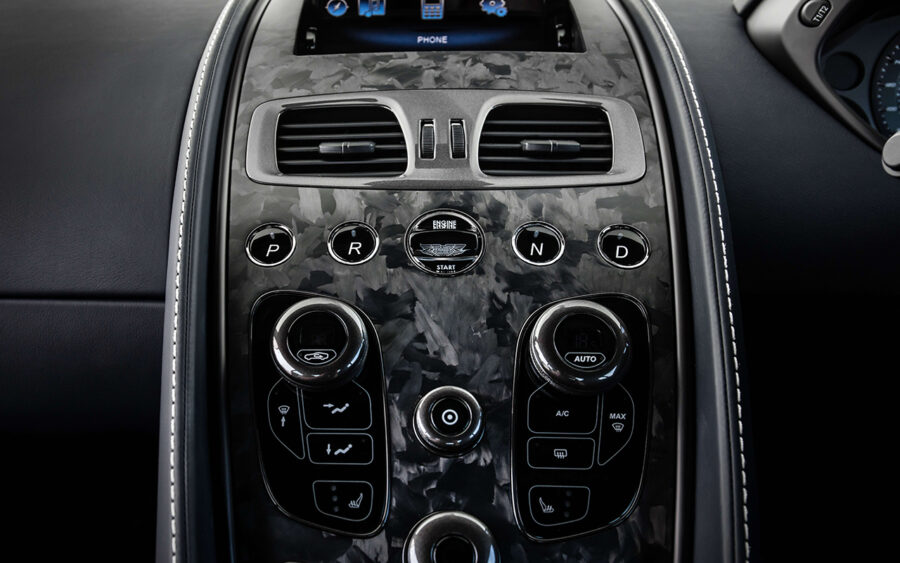
Interior and trim
The interior is a highlight in the Vanquish, appearing a bit different from the DB-series cars. Fit and finish should be good, although the leather can shrink around the dashboard – though this is less likely to be an issue in the UK where it’s not so hot.
Check everything works and make sure you get a full compliment of keys; the crystal push-in item is quite easily damaged if dropped and very expensive to replace. One known issue with the early cars is the console behind the push-button transmission can fail, leading to it dropping out. This was something Aston Martin used to repair as a courtesy but as the cars are getting older, you’ll have a job convincing them to do so – for free, at least.
The Vanquish was offered in two-seat or 2+2 guise, and while those rear seats are next to useless for all but the smallest of passengers, they’re far more commonly specified with them than not. Boot space is ample and certainly enough for a touring holiday for two.
Aston Martin Vanquish (2012–2018): our verdict
Aston Martin specialist McGurk is a big fan of the second-generation Vanquish, saying used examples are: “good cars, look great, drive well, and they’re young enough not to be suffering the issues of some of the other models.” He adds: “They’re pretty much the same price as the DBS before it, and it’s younger, it’s got a more powerful engine, more recent technology and a better interior than the DBS.”
Find a good one, then, and keep it that way with regular, sensible preventative maintenance and care and you’ll have a charismatic, fast and beautiful super GT that’s able to cosset on the long haul but thrill when the mood and roads allow.
For canny buyers the Vanquish represents a real bargain presently: the market may well wake up to the model some day, and if you get in now you’ll beat them everyone else to it.

